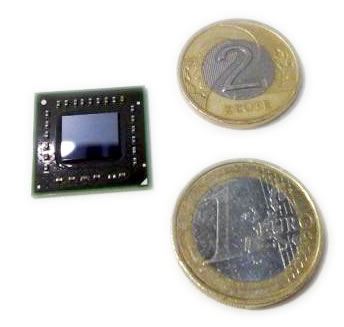AMD has been busy promoting its first Fusion APUs (accelerated processing units) the past few weeks. Besides explaining the upcoming architecture late last month and showing off physical samples at IFA 2010 in Berlin, the company is now sharing some additional details regarding specific products and their power envelopes. Specifically the company mentioned two Bobcat-based APUs that will form the basis of their "Brazos" platform: Ontario and Zacate.
Both APUs implement two Bobcat cores merged with a graphics core capable of DirectX 11 rendering and a new Unified Video Decoder (UVD) on-die to handle full HD decoding at 1080p. Zacate is aimed at ultrathin, mainstream, and value notebooks as well as desktops and all-in-ones. With a TDP of 18W, it will have to compete with Intel's ultra-low voltage Core i3 in these markets. Meanwhile, Ontario will target netbooks and nettops with a TDP rating of just 9W. By comparison, Intel's new Atom N550 with on-die graphics has an 8.5W TDP. Unlike Atom, however, Bobcat cores will support out-of-order instruction handling and thus have the potential to offer significantly higher performance.

AMD also touted the very small physical footprint of both APUs and suggested the combination should result in a "full and vivid digital experience," long battery life and small form factors. We're definitely looking forward to some competition in the notebook and netbook market, so here's hoping the new chips can live up to the hype and long time in development.